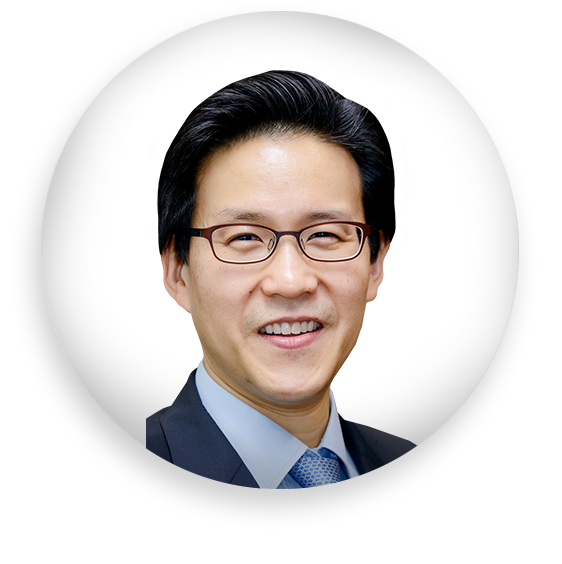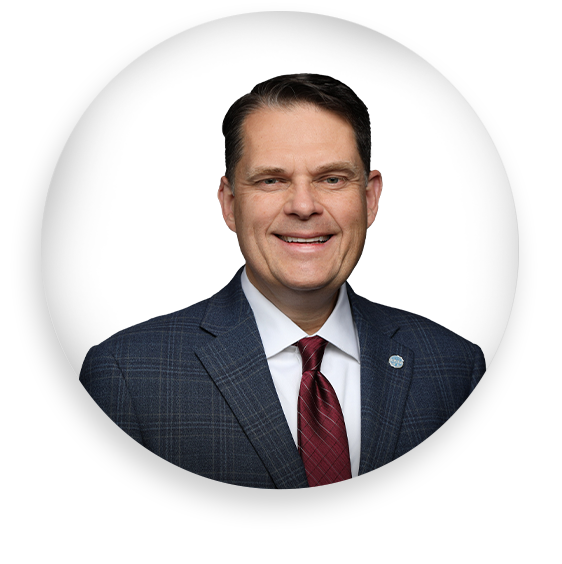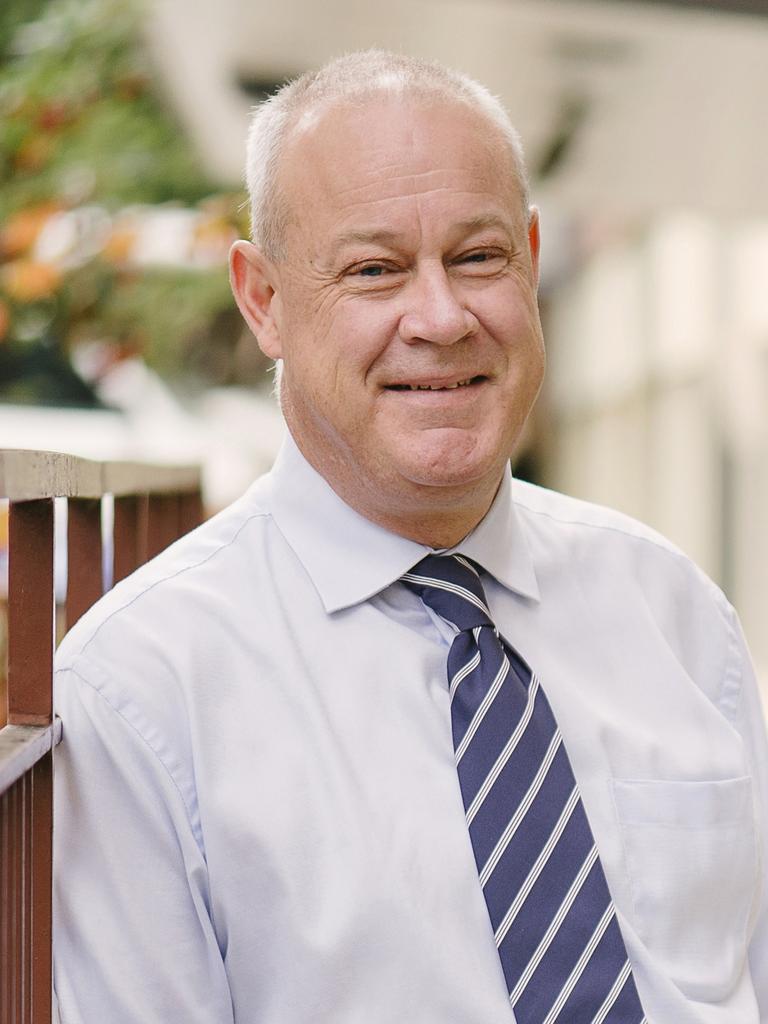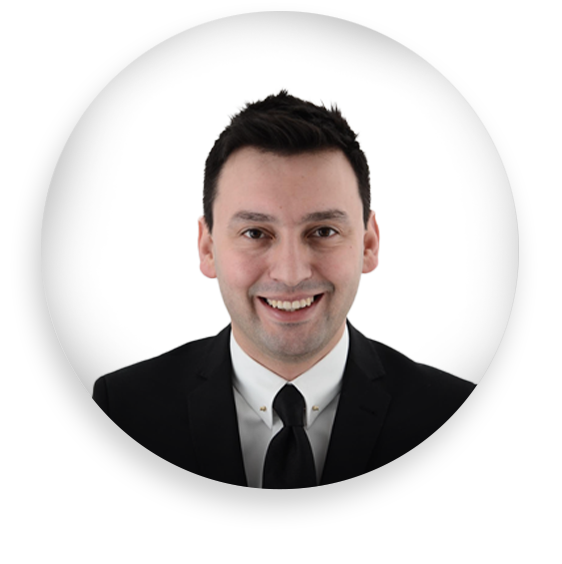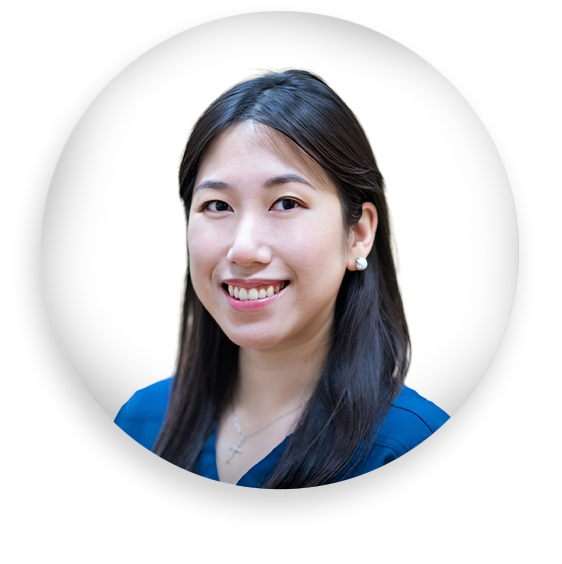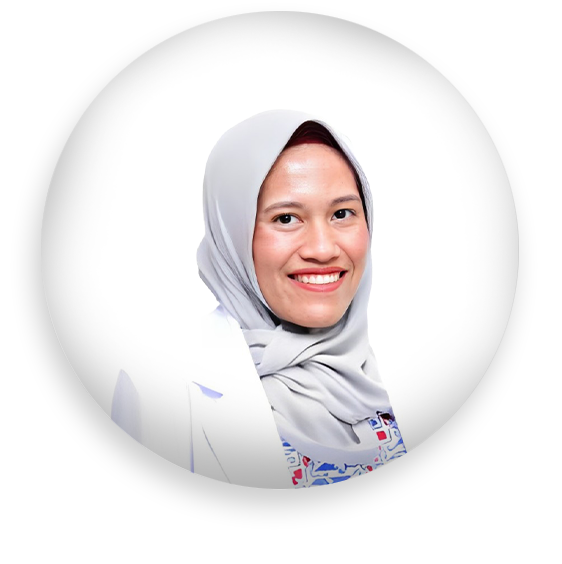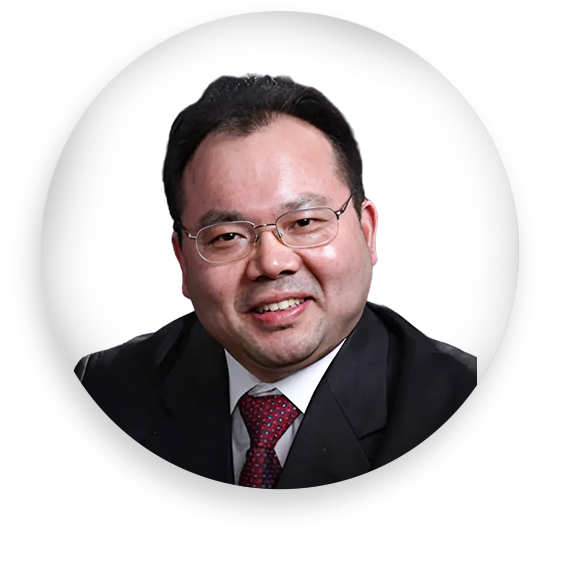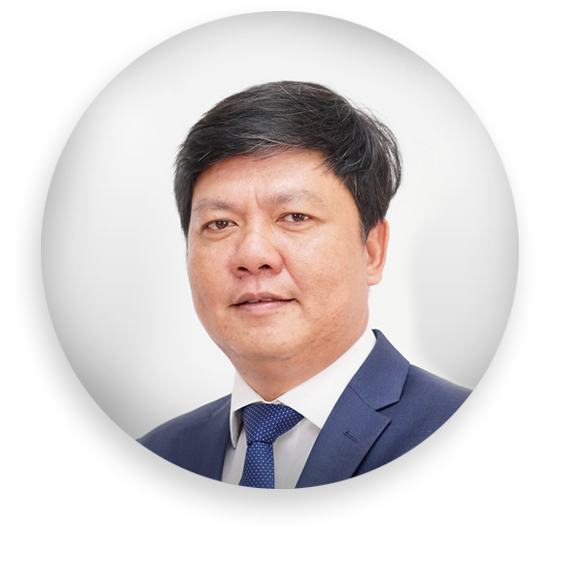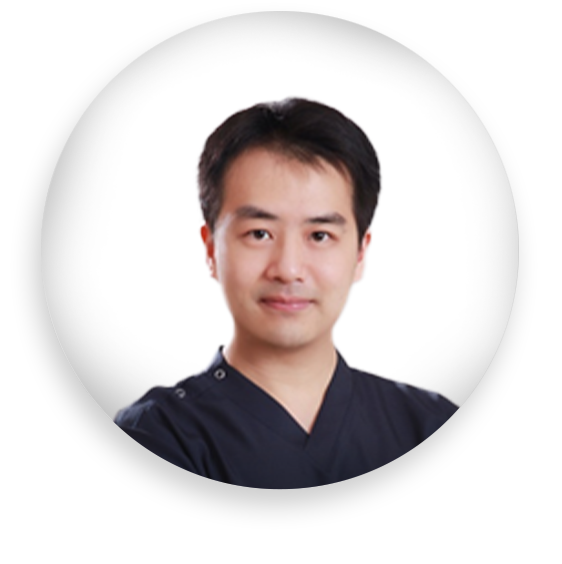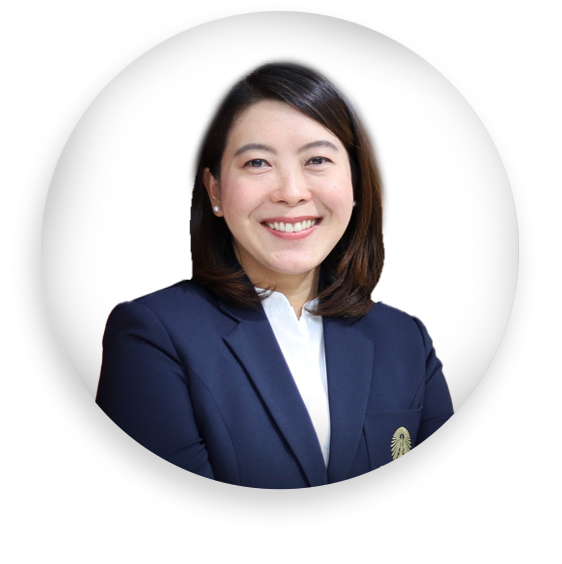TIMELINE CONFERENCE PROGRAM FOR THE 15TH ASIAN PACIFIC SOCIETY OF PERIODONTOLOGY (APSP 2024)
October 16, 2024
| TIME | PROGRAMME |
|---|---|
| 18:00 – 20:30 |
President Dinner |
October 17, 2024 | Millennium Hall
| TIME | PROGRAMME |
|---|---|
| 8:00 – 9:00 |
The Evolution of Clinical Periodontal Therapy: Long Lasting Teeth and Implants Assoc.Prof. David Kim, DDS CV
Country: China – Received DDS degree from the University of Maryland Dental School, USA. Despite advancements in dentistry, the reality of tooth loss persists, particularly among geriatric and medically compromised patients. This vulnerable population will also suffer from functional decline and age-related pathologies. Thus, preserving and restoring teeth and oral function will be crucial, and the loss of teeth significantly hinders chewing ability because prosthodontic treatments cannot fully restore masticatory performance. It’s worth noting that the retention of natural teeth is linked to a longer life expectancy. This presentation will introduce the role of growth factors and dental lasers in periodontics and how different specialists in dentistry could work together to keep teeth and implants for life. |
| 9:00 – 9:30 | Grand Opening |
| 9:30 – 10:00 | Teabreak |
| 10:00 – 10:45 |
AAP Update and more Stephen Meraw, DDS, MS CV
Country: USA – Received DDS degree from University of Detroit Mercy, USA in 1995. The American Academy of Periodontology aims to be a collaborative partner for all periodontists worldwide. Current initiatives and opportunities for collaboration will be discussed. |
| 10:45 – 11:15 |
Silver-doped bone grafting in sheep tooth sockets and femur defects Prof. Warwick Duncan, BDS, PhD CV
Country: New Zealand – Received BDS degree from Otago University, New Zealand in 1985. We have developed a bovine bone xenograft (OMB) doped with antibacterial lipoic-capped silver-nanoparticles (AgNP), for alveolar ridge preservation after tooth extraction. In 4 sheep, mandibular premolar teeth were extracted; each also received two 8.5x4mm deep circular defects in the femoral epicondyle of both posterior legs. Sites were filled either OMB, OMB+AgNP, BioOss® xenograft or left unfilled, and covered with a resorbable collagen membrane. Two sheep each were euthanised after 8 and 12 weeks. Samples were analysed using non-demineralised resin-embedded histology. Results: OMB+/-AgNP demonstrated equivalent bone fill to each other and to BioOss®; all grafted sites showed more bone fill than un-grafted controls. Mandibular socket and femur sites were comparable. Results were not statistically compared in this pilot study. Conclusions. Both modified OMB BBXs showed equivalent results to commercially available BBX (BioOss®). The addition of AgNP did not impair bone healing. This pilot study supports progressing to larger-scale preclinical trials. Objectives: |
| 11:15 – 11:45 |
Periodontal treatment in the post – antibiotic Era (Video Presentation) Prof. Mark Bartold, DDS, PhD CV
Country: Australia – Professor Emeritus at the University of Adelaide, Australia. Periodontal treatment in post antibiotic era will incorporate significantly reduced, if not elimination of, antibiotic use for the management of the periodontal diseases. In their place, the development of novel antimicrobial and, importantly, inflammation modulatory biologics, that can be incorporated into sophisticated or simple delivery systems will be used as adjuncts to conventional periodontal therapy. The use of these adjuncts would be based on current understanding of the pathogenesis of periodontitis and the central role that inflammation plays in this process. This should not diminish the rational use of antimicrobial (non-antibiotic) agents as well. Treatments could be made on the basis of a personalized approach to specifically target the microbial biofilm, the inflammatory response, or both, depending on the clinical findings and individual features of each case. Thus, a more holistic approach to management of the periodontal diseases will evolve and move our treatment focus from a mono-therapy anti-bacterial approach to one that considers more of the underlying causes and ramifications of periodontal inflammation. In the future, the use of antibiotics will become redundant as viable alternatives for their replacement become available. This, together with novel local delivery vehicles will forge a new future in the post antibiotic era. |
| 11:45 – 12:15 |
Periodontic-Orthodontic management of Hereditary Gingival Fibromatosis Yuhaniz Ahmad Yaziz, BDS, MSc CV
Country: Malaysia – Received BDS degree from University of Malaya, Malaysia in 1995. Hereditary gingival fibromatosis (HGF) is a rare disorder characterized by a benign, non-hemorrhagic, fibrous gingival overgrowth that can appear in isolation or as part of a syndrome. HGF usually begins during the transition from primary to permanent teeth, other than disrupting the eruption of permanent teeth and functional derangement of the dentition, it can have a negative psychological effects to a young patient due to impaired aesthetic. As it does not resolve spontaneously, both periodontal and orthodontic aspects need to be considered which may involve multiple surgical intervention and orthodontic movement which prove to be challenging. This lecture will discuss the Periodontic-Orthodontic management of a clinical case of HGF covering the various surgical approach, timing of extraction and orthodontic movement. Objectives: |
| 12:15 – 13:30 | Lunch |
| 13:30 – 14:30 |
The future of reconstructive surgery for teeth and implants: Influence of biomaterials and flap design Serhat Aslan, DDS, PhD CV
Country: Türkiye – Received DDS degree from Ege University, School of Dentistry, Türkiye. Periodontal treatments involving cause-related therapy, resective and regenerative periodontal surgeries have been well documented over the last 30 years. In the era of esthetics, clinicians are seeking for optimal results by avoiding invasive treatments. Recent developments in regenerative techniques and adoption of microsurgery in periodontal and peri-implant tissue reconstruction minimize the tissue trauma/loss, and this led to an increase in the expectations of the patients. However, the clinical excellence does not only depend on the clinical skills or practice settings. Treatment outcome is influenced by combination of many factors. For clinical success, treatment steps and protocols should be embraced by patient and clinician. In this lecture, the requirements for periodontal/peri-implant tissue reconstruction and health will be discussed in greater details. |
| 14:30 – 15:00 |
Preserve & Protect: The Art of Papilla Preservation in Periodontal Surgery Prof. Shaili Pradhan CV
Country: Nepal – Received BDS degree from Liaquat Medical College, Hyderabad, Pakistan in 1991. Periodontal surgeries aim to restore and maintain the health and aesthetics of the periodontium. Among the critical aspects of successful periodontal surgery is the preservation of the interdental papilla. The contour of the interdental tissues, as well as the color and texture of the keratinized tissues, are essential elements of anterior esthetics. Preservation techniques, such as careful flap design, minimally invasive approaches, and meticulous handling of soft tissues are essential to minimize trauma and maintain blood supply to the papilla. This presentation aims to highlight the significance of papilla preservation in periodontal surgery, the techniques, and their impact on the overall success of the procedure. Furthermore, the impact of patient-specific factors and anatomical considerations on papilla preservation outcomes is also addressed. By prioritizing papilla preservation and employing evidence-based techniques, periodontists can enhance treatment outcomes and patient satisfaction in periodontal surgery. Objectives: |
| 15:00 – 15:30 |
Interdisciplinary approach in gummy smile management Tran Ngoc Quang Phi, DDS, PhD CV
Country: Viet Nam – Received DDS degree from Faculty of Odonto-Stomatology, University of Medicine and Pharmacy, Ho Chi Minh City in 1990. Smile aesthetics are closely related to smile lines and smile arcs. Gummy smile, where more than 2 mm of gums are exposed when smiling, is an aesthetic issue that many patients concerned about. Gummy smile are associated with delay passive eruption and are successfully resolved with crown lengthening solution. However, crown lengthening is not the only solution to treat a gummy smile because gummy smile is caused many different etilologies that need many other solutions to treat it successfully. This presentaiotn analyzes the different causes of gummy smile and corresponding treatment solutions, in which many cases require integrated treatment through many illustrative clinical cases. |
| 15:30 – 16:00 |
Teabreak |
| 16:00 – 16:30 |
The Gray areas of Stage IV Periodontal Disease Samantha R. Uy-Esguerra, DDS, MSc CV
Country: Philippines – Received DDS degree from the University of the East-Manila, Philippines in 2016. Periodontal disease is an inflammatory condition of the periodontium characterized by attachment loss, and ultimately, tooth loss. Tooth loss is the initiating event of masticatory dysfunction, which may only be noticeable to the patient once a substantial amount has occurred. A significant concern that comes with this dysfunction is the difficulty in its diagnosis, and the limitations it poses on restoration and rehabilitation. The presence of masticatory dysfunction is the delineating factor between a diagnosis of Stage III and Stage IV Periodontitis. However, being the ambiguous concept that it is, it creates gray areas in both diagnosis and treatment, and subsequently, implementation in the clinical practice that present research continuously aims to decode. Recently, a guideline on the diagnosis and management of these cases has been published demonstrating current evidence which includes clinical investigations that may make it more applicable to the daily practice. Objectives: |
| 16:30 – 17:00 |
The periodontally affected molars: navigating the challenges and contemporary strategies from retention to replacement Fok Melissa Rachel DDS, PhD CV
Country: Hong Kong – Received PhD from The University of Hong Kong The clinical judgment of whether to retain periodontally compromised molar through comprehensive periodontal therapy or to extract and replace them with dental implants involves a multifaceted decision-making process that extends beyond the scientifically reported efficacy of the two treatment modalities. This decision has to factor in multi-level elements, including but not exhaustive of the subject, dentition, and site-associated risk factors; periodontal, restorative, endodontic, and occlusal considerations; the strategic value of tooth in dentition; patient’s economics and predilection; and the clinician’s skill and level of training. This presentation will evaluate the existing modern approaches, efficacy, and cost efficiency related to treatment and maintenance of periodontally compromised molars. Furthermore, we will delve into the biological ramifications stemming from the ultimate loss of these molars and examine the strategies and implications associated with rehabilitating these residual ridges with dental implants. The significance of considering both patient and site-level factors when planning tooth extraction and formulating implant rehabilitation protocols will be highlighted. Objectives: |
| 17: 00 – 17:30 |
Gumline to healthline: Exploring the Mouth – Body Connection (Video Presentation) Edwin Heng Chia Kian, BDS, MSc CV
Country: Singapore – Received Bachelor of Dental Surgery from National University of Singapore in 1999. This lecture will cover how certain systemic conditions are related to the oral cavity, including Respiratory Tract infections, Atherosclerosis, Type 2 diabetes, Alzheimer’s disease, preterm birth and more. The session will cover the importance of maintaining optimal oral health and emphasizing the need to provide education to increase awareness of the link between oral and systemic health, in the interest of preventing potentially deadly conditions. |
| 17:00 – 18:00 |
APSP Meeting |
| 19:00 – 21:00 | Sunstar Night Millennium Hall Grand Plaza Hanoi Hotel |
October 18, 2024 | Millennium Hall
| TIME | PROGRAMME |
|---|---|
| 8:00 – 9:00 |
Vertical ridge augmentation using allogenic bone block Jin Young Park, BDS, PhD CV
Country: Korea – Received BDS degree from University of Newcastle Upon Tyne, UK in 2011. There are several advantages of using an allogenic bone block for vertical bone regeneration. Firstly, very good stability can be obtained at the surgical site after fixation of the block. Secondly, there is no donor site morbidity which is a complication when harvesting autogenous block bones. Thirdly, there is no need for the fixation of the barrier membrane for stability which can be a technically demanding procedure. However, the number of studies on vertical bone augmentation using the allogenic bone block is low. In this presentation, clinical cases of vertical ridge augmentation using irradiated allogenic cortico-cancellous bone will be shown including radiographic and histological evidence. Objectives: |
| 9:00 – 9:30 |
Novel Molecular Markers Netrin-1 and MCP-1 linking Periodontitis, Type2 DM and Obesity Prof.Dr. AR Pradeep, BDS, MDS, Phd Guide CV
Country: India – Received BDS degree from Government Dental College, Bangalore, India in 1980. Periodontitis is a multi-factorial chronic inflammatory condition which affects the supporting tissues of the tooth. Periodontal disease and diabetes have bi-directional relationship. The host response against periodontal pathogens results in release of various inflammatory mediators which may have profound effects on systemic condition notably Type 2 Diabetes Mellitus. Netrin-1 are the laminin-like secreted neuronal guidance protein which acts as a guidance cue in the developing central nervous system. They function either chemo-attractive or chemo-repulsive through DCC and UNC-15 receptor respectively. MCP-1 has a significant role in the pathophysiology of several diseases as a critical modulator of monocyte chemotaxis and T-lymphocyte differentiation. This study was designed to evaluate the levels of Netrin-1 and MCP-1 in Gingival Crevicular Fluid (GCF) and serum in Stage III Grade B Periodontitis, T2DM and Obesity. Objectives: |
| 9:30 – 10:00 |
Injectable Scaffold as Minimally Invasive Technique For The Use In Periodontal Hard and Soft Tissue Regeneration Nadhia Anindhita Harsas, DDS CV
Country: Indonesia – Received BDS degree from Faculty of Dentistry, Universitas Indonesia in 2009. Recently, the development of injectable scaffolds for tissue engineering has been growing interest. To develop a novel scaffold for periodontal hard and soft tissue regeneration, bone graft pastes consisting of nano-hydroxyapatite, chitosan, and gelatin (nHA/KG) and also a crosslinked collagen/gelatin (Col/Gel) hydrogel has been designed. In vitro studies on physical, chemical, and biological characteristics were analyzed. For nHA/KG paste, the viscosity characteristics resemble the gel phase. PO43-, CO32-, -OH, Amide I, and II functional groups were detected in nHA/KG paste. Increasing the collagen concentration in the hydrogel (Col-Gel) 1:2 showed the best degradability rate. 3D culture studies of MC3T3E-1 and MRC-5 on nHA/KG paste and HGFs on Col/Gel showed the percentage of cell viability >70%. Up-regulated expression of ALP, OCN, RUNX2, and COL1 were exhibited by nHA/KG pastes. Similar results were also found on COL1 expression by HGFs with Col-Gel. Both nHA/KG pastes and Col/Gel hydrogel are potentially injectable scaffolds for periodontal regenerative therapy. Objectives: |
| 10:00 – 10:30 | Teabreak |
| 10:30 – 11:15 |
Maintenance of Periodontally Susceptible Patients… Can We Do Better? Tan Wah Ching, BDS, PhD CV
Country: Singapore – Received BDS degree from the National University of Singapore in 1998. Life-long maintenance of natural teeth and prevention of premature tooth loss may in the long run, cost less for the patient in many aspects. For periodontally susceptible patients, this may not be an easy task as it requires a life-long commitment. However, the good news is; periodontal therapy is highly predictable and well supported by scientific evidence. The lecture will explore the factors that influence the success of periodontal therapy, and the steps that can be taken to maintain teeth and implants in periodontally susceptible patients. Adjunctive use of local antibiotics for patients undergoing supportive periodontal therapy and the available evidence will also be examined. |
| 11:15 – 11:45 |
Autogenous soft tissue grafting for keratinized mucosa augmentation at implant sites Prof. Wenjie Hu, DDS, PhD CV
Country: China – Received DDS and PhD degree from Peking University School and Hospital of Stomatology in 1999. The keratinized mucosa width (KMW) is an essential components of the peri-implant soft tissue phenotype. Less than 2 mm of KMW was found to be associated with local discomfort upon oral hygiene performance and increased risk for the onset of peri-implant diseases. Several soft tissue augmentation procedures have been developed to increase peri-implant KMW and prevent biological complications around dental implants. Currently, the autogenous free gingival graft (FGG) is considered the clinical standard to gain KMW and thickness at implant sites, presenting favorable outcomes over time. Theoretically, soft tissue augmentation could be performed at any time before/during/after implant treatment. It was once commented that the therapeutic approach to increase KMW was indicated and was most predictable before insertion of the dental implant. The presentation aimed to discuss the effects and timing of autogenous soft tissue grafting for keratinized tissue augmentation at implant sites. |
| 11:45 – 12:15 |
New solution – optimize outcomes of aesthetic crown lengthening surgery Pham Hoai Nam, DDS, MSc CV
Country: Viet Nam – Received DDS degree from University of Medicine and Pharmacy, Ho Chi Minh City, Vietnam in 1994. Crown lengthening surgery improves smile aesthetics and enhances the patient’s quality of life. With nearly 50 years of development, crown lengthening surgery is the most commonly applied esthetic periodontal treatment in dentistry today. However, there are still limitations, affecting the prognosis and results of crown lengthening surgery, including: unnatural crown shape, red inflamed gums, asymmetric smile lines, gingival recession, loss of gingival papillae, or recurrence, … The presentation will analyze the existing problems of esthetic crown lengthening surgery, and introduce new comprehensive solutions, including digital applications in diagnosis, planning and surgery, combining with surgical technique modifications, leading to optimal and long-lasting aesthetic results for patients. |
| 12:15 – 13:30 | Lunch |
| 13:30-14:30 |
Treatment of Single and Multiple Mandibular Recessions (Video Presentation) Prof. Anton Sculean, DDS, PhD CV
Country: Thụy Sỹ – Received DMD degree from the Semmelweis University, Budapest, Hungary in 1990. Predictable coverage of isolated and multiple mandibular gingival recessions is one of the most challenging endeavours in plastic-aesthetic periodontal surgery while the available data from the literature is still limited. In most of the described procedures, a split flap approach was adopted for preparing the flap, tunnel or envelope. However, especially in the mandibular anterior area, a split flap approach may be difficult to perform and bears the risk of flap perforation and/or graft necrosis during the healing phase. In order to reduce these potential complications, modifications of the tunnel procedure, i.e. the Modified Coronally Advanced Tunnel (MCAT), the Laterally Closed Tunnel (LCT) or their combination have been introduced. Learning outcomes: 1. To present the clinical indications for the treatment of single and multiple adjacent mandibulat gingival recessions. |
| 14:30 – 15:00 |
Er:YAG Laser-Assisted Comprehensive Periodontal Pocket Therapy (Er-LCPT) Prof. Akira Aoki, DDS, PhD CV 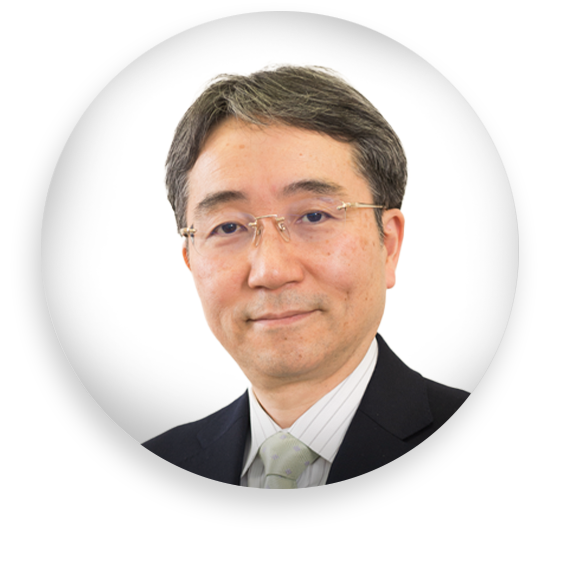
GS.TS.Akira Aoki/ Prof. Akira Aoki, DDS, PhDCountry: Japan CV– Received DDS degree from Tokyo Medical and Dental University, Japan in 1989. AbstractRecently, lasers are increasingly being used in periodontal therapy because of various advantageous therapeutic effects such as ablation, hemostasis, bactericidal effect as well as biostimulation. To date, a number of clinical studies for periodontal pocket treatment using lasers have been published; however, a consensus has not yet been reached regarding its effects. This presentation introduces a novel procedure, using Er:YAG laser combined with conventional mechanical treatment (Er:YAG laser-assisted comprehensive periodontal pocket therapy: Er-LCPT). Er-LCPT is a minimally invasive flapless surgery and enables safe, effective, and comprehensive debridement of periodontal pockets. In the treatment of residual pockets, the effectiveness and safety of this procedure have been confirmed by case series, and also significantly improved outcomes of clinical parameters following Er-LCPT have been detected by RCT study when compared to SRP alone. Furthermore, Er-LCPT may also be used as a flapless regenerative surgery during initial therapy. Objectives: |
| 15:00 – 15:30 |
What We Learned from Auto-transplanted Teeth? From Biological Implant to Bio-mimic Implant Design Da-Yo Yuh, DDS, PhD CV
Country: Taiwan – Received DDS degree from National Defense Medical Center, Taiwan in 2007. Dental implants having been applied to restore the lost dentition for more than fifty years, nevertheless, the time required from implant insertion to functional restoration still takes four to six months for osteointegration. Besides, once exposed to the oral environment, the poorly circulated bone surround implant is more prone to uncoupled bone loss and unresolved immune response induced by oral microbial challenge due to poorly vascularized peri-implant structure in comparison with periodontal structures generated from transplanted tooth. Thus, how to rapidly replace missing teeth with bio-inductive dental implants remains a crucial and unresolved issue. Recent study found the topological signals may induce epigenetic changes in the attached stromal cells, lead to remodeling of the chromatin and activate genes that favor osteogenic differentiation. Our findings further demonstrate that laser-modified titanium surface not only provides topological cues for osteogenesis on gingival stromal cells but also enhance exosome production to promote coupled angiogenesis. Objectives: |
| 15:30 – 16:00 | Teabeak |
| 16:00 – 16:30 |
P4 Periodontics for Precision Periodontal Care Prof. Sašo Ivanovski, DDS, PhD CV
Country: Australia – Received BDSc degree (Honours) from the University of Queensland Dental School in 1993. P4 Medicine is based on a proactive approach for clinical patient care incorporating the four “pillars” of prediction, prevention, personalization and participation for patient management. This lecture explores how the concepts of P4 medicine can be incorporated into the management of periodontal diseases. The proposed model of P4 Periodontics is highly aligned with the 2018 Classification of Periodontal Diseases and represents a logical extension of this classification into treatment paradigms. Each stage of periodontitis can be related to a holistic approach to clinical management. The role of “big data” in future P4 Periodontics is discussed and the concepts of a treat-to- target focus for treatment outcomes is proposed as part of personalized periodontics. Personalized periodontal therapies will refocus our thinking from risk management to regenerative solutions to manage the effects of disease and aging. Objectives: |
| 16:30 – 17:00 |
Supracrestal Connective Tissue Attachment: Clinical Significance, Stem Cells, and Molecular Insights Supreda Srithanyarat, DDS, PhD CV
Country: Thailand – Received DDS degree from Faculty of Dentistry, Chulalongkorn University, Thailand in 2006. Supracrestal connective tissue attachment (SCTA), previously known as “biologic width,” is vital to the gingiva near the periodontal ligament (PDL). Recent research shows that violating the SCTA causes inflammation, loss of periodontal support tissues, and an apical shift of the junctional epithelium. The supracrestal gingival connective tissue fibers, located near the gingival sulcus, are exposed to diverse microorganisms in dental plaque biofilms. This proximity suggests that supracrestal gingival connective tissue-derived mesenchymal stem cells (SG-MSCs) might help maintain tissue homeostasis. SG-MSCs have emerged as promising for periodontal tissue regeneration. They showed the highest cell proliferation rates among marginal gingival tissue-derived MSCs (MG-MSCs) and PDL-MSCs, with similar gene expression profiles to PDL-MSCs. Although SG-MSCs have slightly lower osteogenic differentiation potential than PDL-MSCs, their accessibility and resource availability make them good candidates for periodontal regeneration. Understanding SG-MSCs’ molecular properties is crucial for their therapeutic use in periodontal tissue regeneration and homeostasis. |
| 17:00 – 17:30 |
Management of Peri-Implant tissue inflammation (Video Presentation) Assoc.Prof. Fu Jia Hui CV
Country: Singapore – Received BDS degree from National University of Singapore in 2008. Accumulation of supra- and sub-gingival dental biofilm around implant restorations often lead to peri-implant tissue inflammation. Compared to a periodontitis lesion, a peri-implantitis lesion is characterized by a greater area of infiltrated connective tissue and a non-linear accelerated bone loss pattern. Therefore, early detection and intervention are crucial for effective management and prevention of disease progression. Several treatment modalities, that can be broadly categorised into non-surgical and surgicalmethods, have been used to manage this inflammation. This presentation aims to provide an overview of the nature of peri-implant tissue inflammation, discuss the various treatment modalities and outline the desired treatment endpoints for optimal clinical outcomes. |
| 17:30 – 18:00 |
E – Poster Awards Ceremony |
| 17:30 – 18:00 |
Closing Remark |
| 19:00 – 21:00 |
Farewell Dinner |
October 19, 2024 | Millennium Hall
| TIME | PROGRAMME |
|---|---|
| 8:30 – 12:00 |
Decoding autologous connective tissue graft surgery in Periodontics and Implants Country: Việt Nam – Received DDS degree from HCMC University of Medicine and Pharmacy in 1994. The decisive role of soft tissue in the success of periodontal and implant treatments, both functionally and aesthetically, has been proven. Dentistry today aims to preserve or regenerate soft tissue around teeth and implants of optimal volume, quality and aesthetics. Soft tissue graft surgery is therefore increasingly widely applied in practice. Until now, autologous connective tissue is still considered the gold standard in soft tissue graft surgery. Connective tissue grafting is gradually becoming a routine technique in periodontal and implant surgery. However, connective tissue grafting is a relatively complex, delicate and invasive surgery, requiring surgeons to be equipped with a solid knowledge base combined with proficient skills to achieve optimat and effective treatment results. The presentation will cover the following contents: • Indications for connective tissue grafting in periodontal and implant treatment |
| 13:30 – 17:00 |
Prevention and Treatment of Peri-Implant Soft Tissue Complications, Combined with Gingival Papilla Preservation and Restoration| Country: Việt Nam – Received DDS degree from HCMC University of Medicine and Pharmacy in 1997. Loss of hard tissue and soft tissue are unavoidable consequences after teeth missing. Hard tissue restoration is always considered as a challenge for implant surgeons. Meanwhile, soft tissue reconstruction is a more difficult problem to predict than hard tissue because the soft tissue structure around the implant restoration is often looser than the real teeth, so it is susceptible to soft tissue recession and loss of aesthetics as well as the high risk of peri-implantitis. Consequently, this paper outlines preventive strategies and management techniques for soft tissue complications, derived from a 25-year experience in implant practice, along with clinical cases in soft tissue restoration around implants to ensure long-term functional and aesthetic success. Key word: soft tissue augmentation, peri-implantitis |
The American Academy of Periodontology aims to be a collaborative partner for all periodontists worldwide. Current initiatives and opportunities for collaboration will be discussed.
Picture
CV
Abtract
– Dr. David M. Kim received his dental degree (DDS) from the University of Maryland Dental School, and completed his periodontology training and Doctor of Medical Science (DMSc) in oral biology from Harvard School of Dental Medicine.
– Currently, as an Associate Professor at Harvard School of Dental Medicine, and Director of Continuing Professional Education.
– Dr. Kim is a past recipient of the Joseph L. Henry Award recognizing excellence in research and clinical training from Harvard. In addition, he received the Balint Orban Research Award; Award for Outstanding Teaching and Mentoring in Periodontics; and, a Teaching Fellowship from the American Academy of Periodontology. He has received both Junior and – Senior Faculty Awards from the Harvard School of Dental Medicine.
– Dr. Kim’s clinical and research interests have been on the use of innovative concepts, technologies and biomaterials to enhance intraoral soft and hard tissue formation, especially by incorporating the tissue engineering concept to repair and regenerate soft and hard tissue volume for patients requiring dental implants to replace missing teeth.
– He is a diplomat of the American Board of Periodontology.
Picture
CV
Abtract
Education:
– BDS from the National University of Singapore (NUS) (1998)
– MDS (Periodontology) NUS (2005)
– Dr. Med. Dent. from the University of Berne, Switzerland (2008)
Work Positions:
– Former: Consultant (National Dental Centre, Singapore)
– Current: Specialist Periodontist, Founding Partner (The Dental Studio, Singapore)
Awards:
– IADR Book Prize (2005)
– André Schroeder Research Prize (2015)Life-long maintenance of natural teeth and prevention of premature tooth loss may in the long run, cost less for the patient in many aspects. For periodontally susceptible patients, this may not be an easy task as it requires a life-long commitment. However, the good news is; periodontal therapy is highly predictable and well supported by scientific evidence. The lecture will explore the factors that influence the success of periodontal therapy, and the steps that can be taken to maintain teeth and implants in periodontally susceptible patients. Adjunctive use of local antibiotics for patients undergoing supportive periodontal therapy and the available evidence will also be examined.
Current work positions: Learning Objectives:
Picture
CV
Abtract
Education:
– BDS degree from Otago University in 1985
– MDS degree from Otago University in 1992
– Fellowship from Royal Australasian College of Dental Surgeons in 2001
– PhD degree from Otago University in 2005
– Membership in Royal Society of New Zealand (MRSNZ) in 2012
– Prof. title from Otago University in 2015
– BA degree from Otago University in 2024
– Director of the Sir John Walsh Research Institute, Associate Dean for Research, and Head of Periodontology at Otago University Faculty of Dentistry.
– Regimental Colonel of the Royal New Zealand Dental Corps, and Honorary Dental Surgeon to the Governor General of NZ.We have developed a bovine bone xenograft (OMB) doped with antibacterial lipoic-capped silver-nanoparticles (AgNP), for alveolar ridge preservation after tooth extraction. In 4 sheep, mandibular premolar teeth were extracted; each also received two 8.5x4mm deep circular defects in the femoral epicondyle of both posterior legs. Sites were filled either OMB, OMB+AgNP, BioOss® xenograft or left unfilled, and covered with a resorbable collagen membrane. Two sheep each were euthanised after 8 and 12 weeks. Samples were analysed using non-demineralised resin-embedded histology. Results: OMB+/-AgNP demonstrated equivalent bone fill to each other and to BioOss®; all grafted sites showed more bone fill than un-grafted controls. Mandibular socket and femur sites were comparable. Results were not statistically compared in this pilot study. Conclusions. Both modified OMB BBXs showed equivalent results to commercially available BBX (BioOss®). The addition of AgNP did not impair bone healing. This pilot study supports progressing to larger-scale preclinical trials.
– Grafting materials and Guided bone regeneration
– Novel antimicrobial approaches to oral infection
– Histomorphometric analysis in animal model
Learning Objectives:
Picture
CV
Abtract
– Received BDS degree from University of Malaya in 1995
– Received MClinDent In Periodontology with Distinction from University College of London, UK in 2005
– Received Cert. in Periodontology from the European Federation of Periodontology in 2005
– Current work positions: Senior Consultant in Periodontics, Ministry of Health, Malaysia
– President, Malaysian Society of Periodontology 2022-2024; Past President, Malaysian Society of Periodontology 2024-2026Hereditary gingival fibromatosis (HGF) is a rare disorder characterized by a benign, non-hemorrhagic, fibrous gingival overgrowth that can appear in isolation or as part of a syndrome. HGF usually begins during the transition from primary to permanent teeth, other than disrupting the eruption of permanent teeth and functional derangement of the dentition, it can have a negative psychological effects to a young patient due to impaired aesthetic. As it does not resolve spontaneously, both periodontal and orthodontic aspects need to be considered which may involve multiple surgical intervention and orthodontic movement which prove to be challenging. This lecture will discuss the Periodontic-Orthodontic management of a clinical case of HGF covering the various surgical approach, timing of extraction and orthodontic movement.
1. Understanding the clinical characteristics of Hereditary Gingival Fibromatosis (HGF)
2. Discuss management of HGF involving periodontic-orthodontic approach using a clinical case
3. Discuss briefly recurrence rate and psychological effects of condition
Picture
CV
Abtract
Prof. Serhat Aslan is a graduate of Ege University, School of Dentistry where he received his DDS degree. He attended Periodontology Program of Graduate Study offered by Institute of Health Sciences at Ege University and awarded a PhD degree at Periodontics. He maintains a private practice limited to periodontics, fixed prosthodontics and implants with focus on microsurgery, hard and soft tissue reconstruction and minimally invasive surgery. Serhat Aslan is a Visiting Professor in the Department of Biomedical, Surgical and Dental Sciences, University of Milan, Italy and in the Department of Oral Health Sciences, Periodontology and Oral Microbiology, KU Leuven, Belgium. He is an Invited Professor in Post-graduate Program in Periodontology and Implantology, University of Porto, Portugal. Currently, he is the board member and treasurer of Turkish Society of Periodontology. Also, he is a member of European Federation of Periodontology, Italian Society of Periodontology and Implantology, Turkish Academy of Esthetic Dentistry and honorary member of Croatian Academy of Aesthetic Dental Medicine. Prof. Aslan is intensely involved in mono/multi-center clinical research and development in periodontology, with special emphasis to plastic-periodontal surgery, guided bone/tissue regeneration and esthetic implant therapy.
Education: – Received BDS degree from Government Dental College, Bangalore, India in 1980. – Received MDS degree from Government Dental College, Bangalore, India in 1985. – Received Prof. title from July, 2000 in Government Dental College, Bangalore, India Former work positions: Dean and Director, Professor and Head Department of Periodontology, and PhD Guide
Picture
CV
Abtract
Periodontitis is a multi-factorial chronic inflammatory condition which affects the supporting tissues of the tooth. Periodontal disease and diabetes have bi-directional relationship. The host response against periodontal pathogens results in release of various inflammatory mediators which may have profound effects on systemic condition notably Type 2 Diabetes Mellitus. Netrin-1 are the laminin-like secreted neuronal guidance protein which acts as a guidance cue in the developing central nervous system. They function either chemo-attractive or chemo-repulsive through DCC and UNC-15 receptor respectively. MCP-1 has a significant role in the pathophysiology of several diseases as a critical modulator of monocyte chemotaxis and T-lymphocyte differentiation. This study was designed to evaluate the levels of Netrin-1 and MCP-1 in Gingival Crevicular Fluid (GCF) and serum in Stage III Grade B Periodontitis, T2DM and Obesity.
Learning Objectives:
1. To estimate the levels of Netrin-1 and MCP-1 in GCF and serum in periodontally healthy subjects, Stage III Grade B periodontitis subjects, with and without Type 2 Diabetes Mellitus and Obesity.
2. To find out association between Netrin-1 and MCP-1 levels in GCF and serum in periodontally healthy subjects, Stage III Grade B periodontitis subjects, with and without Type 2 Diabetes Mellitus and Obesity.
3. To compare and correlate between the levels of Netrin-1 and MCP-1 in GCF and serum in periodontally healthy subjects, Stage III Grade B periodontitis subjects, with and without Type 2 Diabetes Mellitus and Obesity.
4. To explore the possibility of using Netrin-1 and MCP-1 as a marker of inflammation in Stage III Grade B periodontitis and relating with clinical parameters.
Education: – Received DDS degree from the University of the East- Manila in 2016 – Received MDS in Periodontology degree from the University of Hong Kong in 2021 – Recognized Specialist by the Philippine Society of Periodontology and European Federation of Periodontology Current work positions: Private practice and specialist consultant in multiple clinics in Metro Manila
Picture
CV
Abtract
Periodontal disease is an inflammatory condition of the periodontium characterized by attachment loss, and ultimately, tooth loss. Tooth loss is the initiating event of masticatory dysfunction, which may only be noticeable to the patient once a substantial amount has occurred. A significant concern that comes with this dysfunction is the difficulty in its diagnosis, and the limitations it poses on restoration and rehabilitation. The presence of masticatory dysfunction is the delineating factor between a diagnosis of Stage III and Stage IV Periodontitis. However, being the ambiguous concept that it is, it creates gray areas in both diagnosis and treatment, and subsequently, implementation in the clinical practice that present research continuously aims to decode. Recently, a guideline on the diagnosis and management of these cases has been published demonstrating current evidence which includes clinical investigations that may make it more applicable to the daily practice.
Learning Objectives:
• To give a brief revision on the current classification of periodontitis
• To discuss the criteria that are unique to the Stage IV classification
• To present the proposed framework on treatment sequence for management of Stage IV cases
• To emphasize the key concepts in setting treatment goals and management of Stage IV cases
• To introduce current evidence on the clinical application for the diagnosis of masticatory dysfunction
Tran Ngoc Quang Phi, DDS, MSc, PhD graduated from Faculty of odonto-stomatology, University of Medicine and Pharmacy – Ho Chi Minh city in 1990. He received Diplomate of Oro-Maxillofacial Surgery at University of Pharmacy and Medicine – Hochiminh city in 1994, and in 1998, received Master degree of Medicine at University of Medicine and Pharmacy – Hochiminh city. In 2011 He received PhD degree in Maxillofacial Surgery at Institute of Clinical Pharmaceutical and Medical research 108. In 2014 He received Master degree of Dentistry, specialized in Orthodontics, Munster University, Germany. In 2017-2019: Vice-Dean of Faculty of Dentitry, Head of Department of Oral Pathology and Maxillofacial Surgery, Pham Ngoc Thach Medical University. Now: Dean of Faculty of Dentitry, Head of Department of Oral Pathology and Maxillofacial Surgery, Head of Department of Orthodontics and Pedodontics, Chairman of the Ethics Committee in Biomedical Research, Van Lang University. Author of dental books: Applied Dental Anatomy, Clinical Orthodontics: From Principles to Techniques, Applied Dental Materials, … etc. Field of research: Maxillofacial Surgery, Orthodontics, Implantology, TMJ… Smile aesthetics are closely related to smile lines and smile arcs. Gummy smile, where more than 2 mm of gums are exposed when smiling, is an aesthetic issue that many patients concerned about. Gummy smile are associated with delay passive eruption and are successfully resolved with crown lengthening solution. However, crown lengthening is not the only solution to treat a gummy smile because gummy smile is caused many different etilologies that need many other solutions to treat it successfully. This presentaiotn analyzes the different causes of gummy smile and corresponding treatment solutions, in which many cases require integrated treatment through many illustrative clinical cases.
Picture
CV
Abtract
– Received PhD from The University of Hong Kong
Picture
CV
Abtract
– Clinical assistant professor, Periodontology Postgraduate Program Co-director (EFPaccr.)
– Deputy Director, Institute for Advanced Dentistry Clinical Research Centre
– Assistant Dean (Alumni and External Affairs), Faculty of Dentistry, The University of Hong KongThe clinical judgment of whether to retain periodontally compromised molar through comprehensive periodontal therapy or to extract and replace them with dental implants involves a multifaceted decision-making process that extends beyond the scientifically reported efficacy of the two treatment modalities. This decision has to factor in multi-level elements, including but not exhaustive of the subject, dentition, and site-associated risk factors; periodontal, restorative, endodontic, and occlusal considerations; the strategic value of tooth in dentition; patient’s economics and predilection; and the clinician’s skill and level of training. This presentation will evaluate the existing modern approaches, efficacy, and cost efficiency related to treatment and maintenance of periodontally compromised molars. Furthermore, we will delve into the biological ramifications stemming from the ultimate loss of these molars and examine the strategies and implications associated with rehabilitating these residual ridges with dental implants. The significance of considering both patient and site-level factors when planning tooth extraction and formulating implant rehabilitation protocols will be highlighted.
Learning Objectives:
– Appraise the current evidence in the contemporary strategies, predictability, and cost effectiveness in the retention of periodontally compromised molars in the life course of periodontal patients.
– Predict alveolar healing patterns and sinus pneumatization following loss of periodontally compromised molars and comprehend the challenges associated with implant rehabilitation.
– Discuss the efficacy of alveolar ridge preservation in periodontally compromised molar extraction sites.
Picture
CV
Abtract
Education: – Received BDS degree from University of Newcastle Upon Tyne, UK in 2011 – Received PhD degree from Yonsei University School of Dentistry in 2018 – Current work positions: Clinical assistant professor at Department of periodontology, Yonsei University Dental Hospital
There are several advantages of using an allogenic bone block for vertical bone regeneration. Firstly, very good stability can be obtained at the surgical site after fixation of the block. Secondly, there is no donor site morbidity which is a complication when harvesting autogenous block bones. Thirdly, there is no need for the fixation of the barrier membrane for stability which can be a technically demanding procedure. However, the number of studies on vertical bone augmentation using the allogenic bone block is low. In this
presentation, clinical cases of vertical ridge augmentation using irradiated allogenic cortico-cancellous bone will be shown including radiographic and histological evidence.
Learning Objectives:
1. Clinical indications of vertical bone augmentation using the allogenic block bone.
2. How to achieve appropriate fixation of the block bone.
3. The appropriate combination of regenerative materials when using the block bone.
4. The amount of vertical bone gain that can be expected using the allogenic bone block
5. Histological appearance of the regenerated bone using the allogenic block bone.
Education: – Received BDS degree from Faculty of Dentistry, Universitas Indonesia in 2009 – Received DDS degree from Faculty of Dentistry, Universitas Indonesia in 2011 – Received Specialist in Periodontology degree from Faculty of Dentistry, Universitas Indonesia in 2014 – Received BDS degree from Faculty of Dentistry, Universitas Indonesia in 2009 – Consultant of Periodontal Reconstruction and Dental Implant, from – Collegium of Periodontology Indonesia in 2021 – Received Doctoral degree from Faculty of Dentistry, Universitas Indonesia in 2024 Current work positions: Lecturer of Periodontology Department, Faculty of Dentistry, Universitas Indonesia
Picture
CV
Abtract
Recently, the development of injectable scaffolds for tissue engineering has been growing interest. To develop a novel scaffold for periodontal hard and soft tissue regeneration, bone graft pastes consisting of nano-hydroxyapatite, chitosan, and gelatin (nHA/KG) and also a crosslinked collagen/gelatin (Col/Gel) hydrogel has been designed. In vitro studies on physical, chemical, and biological characteristics were analyzed. For nHA/KG paste, the viscosity characteristics resemble the gel phase. PO43-, CO32-, -OH, Amide I, and II functional groups were detected in nHA/KG paste. Increasing the collagen concentration in the hydrogel (Col-Gel) 1:2 showed the best degradability rate. 3D culture studies of MC3T3E-1 and MRC-5 on nHA/KG paste and HGFs on Col/Gel showed the percentage of cell viability >70%. Up-regulated expression of ALP, OCN, RUNX2, and COL1 were exhibited by nHA/KG pastes. Similar results were also found on COL1 expression by HGFs with Col-Gel. Both nHA/KG pastes and Col/Gel hydrogel are potentially injectable scaffolds for periodontal regenerative therapy.
Learning Objectives:
To analyze the differences in the characteristics of nHA/KG bone graft paste and crosslinked collagen/gelatin hydrogel (Col-Gel) in periodontal tissue regeneration.
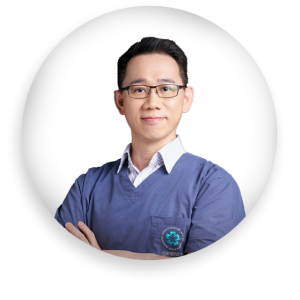
Picture
CV
Abtract
Updating…
Updating…
Updating…
Education: – Received BDS degree from Fiji School of Medicine 2007 – Received MPH from Fiji National University in 2015 – Received DClinDent (perio) from University of Otago in 2020 – Assistant Prof. in Periodontics at Fiji National University since 2021 Former work positions: Lecturer in Fiji National University since 2009 Design: Right side premolar teeth were removed from thirty Romney – cross ewes. Standardised sockets in each sheep were randomly allocated treatments, a grafted test and an empty control. At 4-, 8- and 16-weeks sheep were euthanized, and tissue collected (N = 10/group). RANK, RANKL and OPG immunohistochemical analysis was performed (n = 3). RANK, RANKL, OPG, COL1A1, TIMP3, SP7 and MSX2 mRNA expression levels were determined using RT2 -qPCR assays (n = 3). Results: Histologically, more new woven bone was observed in the test group at all time points. Strong RANK and RANKL expression was found in both groups; at all time points with stronger RANK staining in the test group at 8 and 16 weeks. Strong OPG staining was localized to both osteoblasts and connective tissues. RANK receptor mRNA was expressed at a lower level in the test group (− 4.26-fold; p = 0.02) at 4 weeks and SP7 at 16 weeks (− 2.89-fold; p = 0.04). COL1A1 and TIMP3 mRNA expression increased significantly over time in the control group (p = 0.045, F = 5.4 and p = 0.003, F = 42.2 respectively). Conclusion: Socket healing over time was comparable. The sheep tooth extraction model was found to be suitable for the evaluation of changes in the alveolar bone at the molecular level. Learning Objectives:
Picture
CV
Abtract
Objective: To compare key markers of bone remodelling in a sheep tooth extraction model for sockets left to heal naturally or grafted with the bovine-derived xenograft Bio-Oss® covered with a collagen Bio – Gide® membrane.
1. To determine the expression of RANK/RANKL/ OPG during healing in a grafted and ungrafted tooth extraction socket
2. To understand the expression of markers of healing in a grafted and ungrafted tooth extraction socket
Education: Supracrestal connective tissue attachment (SCTA), previously known as “biologic width,” is vital to the gingiva near the periodontal ligament (PDL). Recent research shows that violating the SCTA causes inflammation, loss of periodontal support tissues, and an apical shift of the junctional epithelium. The supracrestal gingival connective tissue fibers, located near the gingival sulcus, are exposed to diverse microorganisms in dental plaque biofilms. This proximity suggests that supracrestal gingival connective tissue-derived mesenchymal stem cells (SG-MSCs) might help maintain tissue homeostasis. SG-MSCs have emerged as promising for periodontal tissue regeneration. They showed the highest cell proliferation rates among marginal gingival tissue-derived MSCs (MG-MSCs) and PDL-MSCs, with similar gene expression profiles to PDL-MSCs. Although SG-MSCs have slightly lower osteogenic differentiation potential than PDL-MSCs, their accessibility and resource availability make them good candidates for periodontal regeneration. Understanding SG-MSCs’ molecular properties is crucial for their therapeutic use in periodontal tissue regeneration and homeostasis. Education: – Received DDS degree from Tokyo Medical and Dental University (TMDU), Japan in 1989 – Received PhD degree from TMDU, Japan in 1996 – Received Prof. title from TMDU, Japan in 2019 Current work positions: Professor, Photoperiodontics, Department of Periodontology, Graduate School of Medical and Dental Sciences, Institute of Science Tokyo
Picture
CV
Abtract
Updating…
– Received DDS degree from Faculty of Dentistry, Chulalongkorn University in 2006
– Received M.Sc. in Periodontics from Department of Periodontology, Faculty of Dentistry, Chulalongkorn University in 2009
– Received PhD degree from Tokyo Medical and Dental University (Advance in Oral Science) in 2014
– Current work positions: Assistant Professor, Department of Periodontology, Faculty of Dentistry, Chulalongkorn University
Picture
CV
Abtract
Recently, lasers are increasingly being used in periodontal therapy because of various advantageous therapeutic effects such as ablation, hemostasis, bactericidal effect as well as biostimulation. To date, a number of clinical studies for periodontal pocket treatment using lasers have been published; however, a consensus has not yet been reached regarding its effects. This presentation introduces a novel procedure, using Er:YAG laser combined with conventional mechanical treatment (Er:YAG laser-assisted comprehensive periodontal pocket therapy: Er-LCPT). Er-LCPT is a minimally invasive flapless surgery and enables safe, effective, and comprehensive debridement of periodontal pockets. In the treatment of residual pockets, the effectiveness and safety of this procedure have been confirmed by case series, and also significantly improved outcomes of clinical parameters following Er-LCPT have been detected by RCT study when compared to SRP alone. Furthermore, Er-LCPT may also be used as a flapless regenerative surgery during initial therapy.
Learning Objectives:
– To enumerate the advantageous characteristics of Er:YAG laser in periodontal therapy
– To explain the current clinical status of Er:YAG laser in pocket treatment
– To understand the concept, procedure and effects of Er-LCPT technique
Education: – Received DDS degree from National Defense Medical Center in Taiwan in 2007. – Received DScD degree in Periodontology from University of Pennsylvania in USA in 2019. – Received Assistant Prof. title from NDMC in 2021. Former work positions: Physician in Charge, dental department of Tingjou branch, TSGH. Current work positions: Director, oral diagnosis and oral pathology program, NDMC.
Picture
CV
Abtract
Dental implants having been applied to restore the lost dentition for more than fifty years, nevertheless, the time required from implant insertion to functional restoration still takes four to six months for osteointegration. Besides, once exposed to the oral environment, the poorly circulated bone surround implant is more prone to uncoupled bone loss and unresolved immune response induced by oral microbial challenge due to poorly vascularized peri-implant structure in comparison with periodontal structures generated from transplanted tooth. Thus, how to rapidly replace missing teeth with bio-inductive dental implants remains a crucial and unresolved issue. Recent study found the topological signals may induce epigenetic changes in the attached stromal cells, lead to remodeling of the chromatin and activate genes that favor osteogenic differentiation. Our findings further demonstrate that laser-modified titanium surface not only provides topological cues for osteogenesis on gingival stromal cells but also enhance exosome production to promote coupled angiogenesis.
Learning Objectives:
Laser-modified titanium surface provides topological cues for gingival stromal cells which promotes osteogenesis and coupled angiogenesis.
Picture
CV
Abtract
Sašo Ivanovski is the Dean at the University of Queensland School of Dentistry in Brisbane, Australia. He also carries out part time specialist clinical practice in periodontics and surgical implant dentistry. He has published over 300 peer-reviewed papers and leads an internationally recognized research group with an interest in oro-dental regeneration, tissue engineering, clinical periodontics and implant dentistry.
P4 Medicine is based on a proactive approach for clinical patient care incorporating the four “pillars” of prediction, prevention, personalization and participation for patient management. This lecture explores how the concepts of P4 medicine can be incorporated into the management of periodontal diseases. The proposed model of P4 Periodontics is highly aligned with the 2018 Classification of Periodontal Diseases and represents a logical extension of this classification into treatment paradigms. Each stage of periodontitis can be related to a holistic approach to clinical management. The role of “big data” in future P4 Periodontics is discussed and the concepts of a treat-to- target focus for treatment outcomes is proposed as part of personalized periodontics. Personalized periodontal therapies will refocus our thinking from risk management to regenerative solutions to manage the effects of disease and aging.
Learning Objectives:
1. Understand the 4 pillars of P4 Medicine
2. Recognize how P4 Medicine concepts align with the 2018 Classification of Periodontal Diseases
3. Appreciate how P4 medicine concepts can be incorporated into periodontal disease management.
Picture
CV
Abtract
Education:
– Received DDS and PhD degree from Peking University School and Hospital of Stomatology in 1999
– Received Prof. title from Peking University School and Hospital of Stomatology in 2013
– Former work positions: Vice Chairman of Department of Periodontology, Peking University School and Hospital of Stomatology
– Current work positions: Vice Dean of Peking University School and Hospital of Stomatology The keratinized mucosa width (KMW) is an essential components of the peri-implant soft tissue phenotype. Less than 2 mm of KMW was found to be associated with local discomfort upon oral hygiene performance and increased risk for the onset of peri-implant diseases. Several soft tissue augmentation procedures have been developed to increase peri-implant KMW and prevent biological complications around dental implants. Currently, the autogenous free gingival graft (FGG) is considered the clinical standard to gain KMW and thickness at implant sites, presenting favorable outcomes over time. Theoretically, soft tissue augmentation could be performed at any time before/during/after implant treatment. It was once commented that the therapeutic approach to increase KMW was indicated and was most predictable before insertion of the dental implant. The presentation aimed to discuss the effects and timing of autogenous soft tissue grafting for keratinized tissue augmentation at implant sites.
Education: – Received BDS degree from (institution)Liaquat Medical College, – –Hyderabad, Pakistan in 1991 – Received Prof. title from NAMS in 2010 Former work positions: Current work positions: Chief Consultant Dental Surgeon Learning Objectives:
Picture
CV
Abtract
<
Periodontal surgeries aim to restore and maintain the health and aesthetics of the periodontium. Among the critical aspects of successful periodontal surgery is the preservation of the interdental papilla. The contour of the interdental tissues, as well as the color and texture of the keratinized tissues, are essential elements of anterior esthetics. Preservation techniques, such as careful flap design, minimally invasive approaches, and meticulous handling of soft tissues are essential to minimize trauma and maintain blood supply to the papilla. This presentation aims to highlight the significance of papilla preservation in periodontal surgery, the techniques, and their impact on the overall success of the procedure. Furthermore, the impact of patient-specific factors and anatomical considerations on papilla preservation outcomes is also addressed. By prioritizing papilla preservation and employing evidence-based techniques, periodontists can enhance treatment outcomes and patient satisfaction in periodontal surgery.
1. To understand papilla preservation flap surgical technique
2. to learn how to maintain papilla form
3. To learn how to preserve soft tissue in esthetic areas



